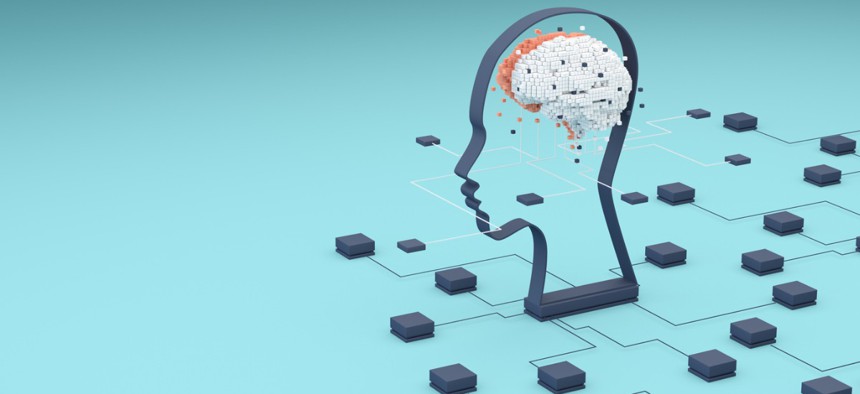Defense AI Efforts Hinge on Strong Data Environments

The Defense Department's AI efforts will require enterprise data intrastructure. Olemedia/iStock
JAIC Director Lt. Gen. Michael Groen spoke about the department’s current efforts to implement artificial intelligence and incorporate more sophisticated software into DOD’s daily operations.
Establishing strong data environments and strategies will be key to the adoption of artificial intelligence in the military, according to Lt. Gen. Michael Groen, the director of the Joint Artificial Intelligence Center at the Defense Department.
Speaking in a webinar Wednesday on Federal News Network, Groen painted a picture of AI within DOD, emphasizing the need to cultivate an infrastructure that can handle a dynamic data environment.
Groen described acquisition of AI technologies as a “generational transformation” that would take time, beginning with shifting DOD from a hardware-centric organization to a “world class software organization.
“Getting our data strategies together is a really important component,” he said. A major part of this will be changing the data ecosystem that DOD employs, specifically in regard to installing a common data environment to facilitate AI usage throughout the department.
Common data standards will help facilitate cross-departmental data collection and sharing. This in turn will help different DOD departments make operational decisions, including in combat.
“If 10 of 10 organizations can fire on the target you’ve identified, how do you decide which one actually should do that so that the other nine can save their ammo?” Groen said.
Groen confirmed that this work has yet to be done, and hinges on strong data pipelines.
“As we build and grow and now start to get to a cohesive enterprise, a professional enterprise that’s predictable and trackable and has metrics, then we’re really going to be somewhere,” he said.
DOD’s implementation of more advanced software can help curate and organize the influx of data coming into the department, creating a dynamic data environment that can take the input data and make recommendations and insights with sophisticated algorithms.
Implementing robust application program interfaces, orAPIs, is also a key data strategy, which will help store live data in repositories that need to be accessible between DOD agencies.
Once a culture and infrastructure of enterprise data is adopted within DOD, advanced analytics and AI can be implemented. This will help extend existing programs like the AI and Data Acceleration initiative, known as ADA, Groen said.
On a staffing level, Groen added the DOD’s chief data officer and a corresponding team are building smaller operational data teams to help combatant commands and help them interpret and organize their data flows. These operational teams will be composed of government civilians augmented by contractors to optimize workflow within combatant commands.
He said that automating some of the data coming into combatant commands, such as object recognition and imagery, can help them make smarter decisions.
“We have to shift that culture from a hardware mindset to a software mindset and a software mindset and software-based capabilities,” he said.



